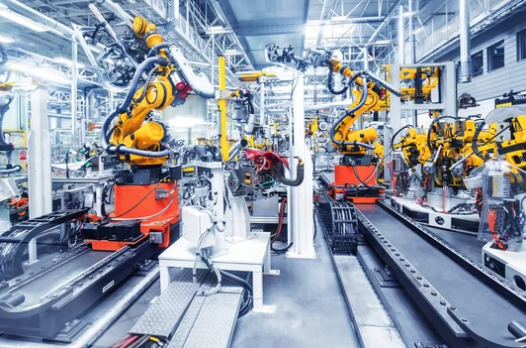The heart of every nuclear reactor is its cooling system, responsible for transferring heat away from the core and ensuring safe, stable operations. Reactor cooling is one of the most critical engineering challenges in nuclear technology, as it prevents overheating, maintains structural integrity, and safeguards against catastrophic accidents. Over decades, engineers have developed innovative cooling technologies that make nuclear reactors safer, more efficient, and more resilient.
This article explores the engineering behind reactor cooling systems, highlighting innovations, safety mechanisms, and the future of thermal management in nuclear power.
The Importance of Reactor Cooling Systems
Nuclear fission generates enormous amounts of heat, which must be managed continuously:
- Preventing Overheating: Excessive core temperatures can lead to fuel damage or meltdown.
- Energy Transfer: Cooling systems extract heat for electricity generation in turbines or industrial processes.
- Safety During Emergencies: Effective cooling prevents accidents during system failures or external hazards.
Reactor cooling is not merely about removing heat—it is a complex engineering system that integrates thermodynamics, fluid dynamics, and safety protocols.
Primary Reactor Cooling Methods
Several cooling methods have been engineered depending on reactor type:
1. Pressurized Water Reactors (PWRs)
- Water is used as both coolant and neutron moderator.
- Operates under high pressure to prevent boiling.
- Heat is transferred to a secondary loop, which drives turbines for electricity generation.
- PWRs are widely used due to stability, reliability, and well-understood thermodynamics.
2. Boiling Water Reactors (BWRs)
- Water is allowed to boil directly in the reactor core.
- Steam is generated for turbines without a separate loop.
- Requires precise control of water levels and pressure to ensure safety.
3. High-Temperature Gas-Cooled Reactors (HTGRs)
- Use helium or carbon dioxide as coolant.
- Operate at very high temperatures for industrial heat applications.
- Engineered with ceramic-coated fuel and advanced heat exchangers for thermal efficiency.
4. Liquid Metal-Cooled Reactors (LMRs)
- Use sodium, lead, or lead-bismuth alloys as coolants.
- Offer excellent heat transfer and allow compact, high-power reactors.
- Require specialized engineering to prevent chemical reactions and ensure containment.
Engineering Innovations in Reactor Cooling
Modern reactors are incorporating advanced engineering to enhance cooling performance and safety:
1. Passive Cooling Systems
- Utilize natural convection, gravity, and heat conduction.
- Operate without external power, ensuring core cooling during outages or emergencies.
- Examples include NuScale SMRs, which rely on passive cooling tanks.
2. Redundant Cooling Loops
- Multiple independent loops ensure backup if one system fails.
- Enhances resilience and minimizes risk of overheating.
3. Advanced Heat Exchangers
- High-efficiency designs improve heat transfer to turbines or secondary systems.
- Materials engineered for high-temperature, corrosion, and radiation resistance.
4. AI-Enhanced Monitoring
- Sensors and AI systems monitor coolant temperature, flow, and pressure.
- Predictive algorithms detect anomalies before they compromise safety.
Lessons from Past Cooling Failures
Historical reactor incidents have underscored the critical role of cooling:
- Three Mile Island (USA, 1979): Partial meltdown caused by a malfunctioning cooling system.
- Fukushima Daiichi (Japan, 2011): Loss of coolant following tsunami flooding highlighted the need for passive and flood-resistant systems.
These events drove innovations in passive safety, backup power systems, and emergency heat removal technologies.
Cooling in Next-Generation Reactors
Next-generation reactors, including SMRs and Generation IV designs, are redefining cooling systems:
- Small Modular Reactors (SMRs): Compact, passive cooling reduces reliance on external pumps.
- Molten Salt Reactors (MSRs): Use liquid fuel that also serves as coolant, improving heat transfer and safety.
- Fast Neutron Reactors (FNRs): Advanced liquid metal coolants allow higher power density with efficient heat removal.
These designs integrate thermal management with overall reactor safety, making them more resilient to emergencies.
Emerging Technologies in Cooling Engineering
Innovations in cooling systems include:
- Nanofluid Coolants: Enhance heat transfer efficiency.
- Self-Healing Heat Pipes: Automatically maintain thermal conductivity under stress.
- Hybrid Cooling Systems: Combine passive and active methods for redundancy.
- Digital Twins for Thermal Simulation: Engineers can test cooling performance under extreme scenarios virtually before deployment.
These technologies demonstrate how engineering ingenuity is pushing the boundaries of nuclear safety and efficiency.
Global Reactor Cooling Projects
Leading-edge cooling projects demonstrate the application of these innovations:
- NuScale SMRs (USA): Passive cooling system capable of maintaining safe shutdown indefinitely without operator intervention.
- China’s HTR-PM: High-temperature helium coolant enabling both electricity generation and industrial heat use.
- Russia’s BN-800 Fast Reactor: Sodium coolant with advanced monitoring for efficient heat transfer and long-term reliability.
- ITER Fusion Project (France): Cryogenic and liquid-metal cooling systems designed to manage extreme fusion plasma heat loads.
These projects highlight engineering solutions that ensure both efficiency and resilience under diverse conditions.
The Future of Reactor Cooling Systems
The next decade of nuclear engineering will likely see:
- Integration of AI for real-time thermal optimization.
- Hybrid passive-active systems for maximum safety.
- Advanced materials that resist corrosion, radiation, and extreme heat.
- Compact and scalable cooling designs for SMRs and micro-reactors.
Cooling systems will continue to be a critical innovation area, determining reactor safety, efficiency, and economic viability.
Conclusion
Reactor cooling systems are the lifeblood of nuclear engineering, ensuring that immense heat is managed safely and efficiently. From traditional PWRs and BWRs to SMRs, molten salt reactors, and fusion experiments, engineering innovations in cooling have made nuclear power safer, more flexible, and more reliable.
By combining passive safety systems, advanced materials, AI monitoring, and next-generation designs, engineers are ensuring that nuclear reactors remain cool under pressure—ready to meet the energy demands of the future safely and sustainably.
Also Read :
